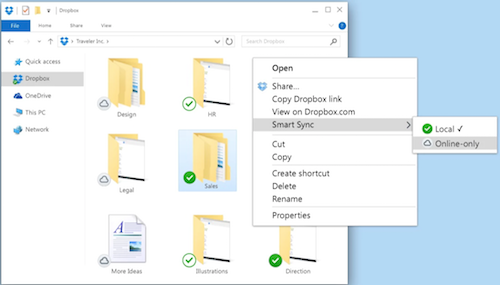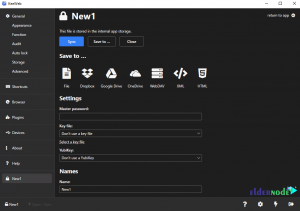

- Keeweb select dropbox folder how to#
- Keeweb select dropbox folder install#
- Keeweb select dropbox folder update#
The easiest way to do this is actually to install a set of tools called apache2-utils. We do not want to allow just anyone to access our passwords database. However, we also need to implement a mechanism for authenticating ourselves to the server. We now have SSL certificates to encrypt our communications to our server. When you are finished, you will have two files called nginx.key and nginx.crt in your /etc/nginx/ssl directory. This is asking for the domain name or IP address of your server. The most important question is the one that reads Common Name (e.g. This will ask you a series of questions about your site. Now, we can generate a self-signed SSL certificate by typing: sudo openssl req -x509 -nodes -days 365 -newkey rsa:2048 -keyout /etc/nginx/ssl/nginx.key -out /etc/nginx/ssl/nginx.crt

To begin, create a directory under the nginx configuration hierarchy that can be used to store our SSL files: sudo mkdir /etc/nginx/ssl This will encrypt our data during transfer so that outside parties cannot read our password information. We will be securing our communication with the server by using SSL. This will download and install the web server.
Keeweb select dropbox folder update#
Install the web server by typing: sudo apt-get update Now, we need to configure a web server to provide secure access to our file. Install NginxĪs a prerequisite to this tutorial, we assume that you have completed the previous guide and have a KeePass2 database file on your remote server. This will let you keep your passwords in a secure location while still allowing you to access the database from any of your devices.
Keeweb select dropbox folder how to#
We will then show you how to connect to and use this remote database file with a local installation of KeePass2. In this guide, we will set up the server to provide secure access to our database file with nginx. In a previous guide, we discussed how to use kpcli to interact with KeePass database files on a remote server. And then you can store that file in Dropbox, so that you have access to it everywhere.KeePass2 is an application that allows you to store, manage, and generate strong passwords for your websites and applications, securely and easily. It gives you "LastPass" like functionality in the browser while you keep being the one that handles your encrypted DB. That last part is what made me finally decide to go for KeeWeb instead of KeePass. It can then be used by Chrome extensions like. Recently they added support for a plug-in that creates a local server compatible with the one created by plug-ins in KeePass. I had to paste it somewhere else, like the browser and then copy it from the browser to paste it in the Terminal. For example, I couldn't copy a password from the interface and paste it in a Terminal (I'm not sure if it was because I use Tmux all the time). I moved away from KeePass to KeeWeb because, although KeePass was first, it is old now, it was written for Windows and then ported using Mono to Linux.Īs it uses Mono for Linux, that generates some issues. KeeWeb is written in JS with desktop apps using Electron.

IMHO It's a lot better than KeePass, especially if you are in Linux. KeeWeb is a drop in replacement for KeePass, it uses the same format, so you can use the same Android clients to open the same file.


 0 kommentar(er)
0 kommentar(er)
